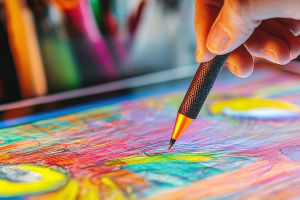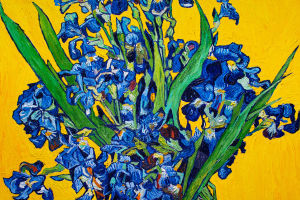Imagine your artwork not just hanging on a gallery wall, but living in the world – adorning someone’s morning coffee mug, brightening a child’s backpack, or adding flair to chic apparel.
This isn't magic; it’s the potent reality of art licensing. It transforms solitary creation into a dynamic partnership, letting art breathe in everyday spaces while the artist retains the keys.
Licensing Decoded
At its heart, art licensing is about controlled sharing, not surrendering ownership. Think of it as granting permission – a carefully crafted rental agreement for your creative work. Instead of selling a piece outright, you allow a company (the licensee) to use your specific design on their products, like cozy pillows or eye-catching packaging.
You, the licensor, define the rules: where, for how long, and on what types of products your art can appear. This strategic approach opens doors to markets and audiences far beyond traditional art venues, turning your studio output into versatile commercial assets.
Terminology Toolkit
Navigating licensing contracts requires understanding the language. Mastering these key terms empowers artists to negotiate confidently. The licensor is always the artist, the rightful owner of the work. The licensee is the business entity seeking to utilize that art commercially.
Crucially, understand the *type* of permission granted. An exclusive license means only that one licensee can use the art during the contract term – others are locked out. A non-exclusive license allows you to grant similar rights to multiple companies simultaneously.
A sole license offers a middle ground: the licensee is the only external entity using the art, but *you* can still use it personally. Finally, know the duration control: a revocable license allows you to terminate the agreement under certain conditions, while a non-revocable license binds you for the entire term.
Ubiquity Unleashed
Licensing catapults art into the mainstream. Consider iconic characters – their images appear relentlessly on water bottles, lunchboxes, costumes, and countless other items. This saturation is pure licensing power.
For independent artists, it means seeing a floral design bloom across bedding collections or a geometric pattern energize tech accessories. Your work becomes part of people’s routines, subtly shaping aesthetics and embedding your vision into popular culture. It’s art escaping the frame and weaving itself into the fabric of daily life.
Passive Revenue Stream
One of licensing’s most compelling draws is the potential for passive income. After the initial effort of creation and deal negotiation, royalties can flow consistently. Instead of a single sale payment, you earn ongoing compensation based on product sales.
This typically manifests in two ways: a negotiated flat fee paid upfront or, more commonly, a percentage royalty based on the product's wholesale or retail price. Industry standards often see artists earning 5-10% of the wholesale price.
Platforms like DAB (Digital Arts Blog marketplace) might offer artists more favorable terms, sometimes exceeding this range. This model transforms art into a long-term asset, generating revenue long after the paint dries or the digital file is finalized.
Strategic Choice
Deciding to license involves careful self-assessment. It aligns best with artists comfortable seeing their work adapted, who desire broad exposure, and who value building diversified income streams. It requires a shift from solely creating for personal expression or direct sale to viewing art as licensable intellectual property.
Research is paramount. Understand different industries seeking art (stationery, textiles, giftware), study standard contracts, and potentially consult a legal professional specializing in intellectual property. Platforms like DAB simplify entry but understanding the underlying mechanics is crucial for long-term success and protection.
Conclusion: Unlocking Potential
Art licensing offers a compelling avenue to amplify an artist’s reach and revenue while steadfastly retaining ownership. It’s a strategic tool, transforming individual creations into versatile assets that populate the everyday world – from bed linens to phone cases.
By demystifying the terms and processes, artists can make informed choices. For those ready to explore, it opens a gateway to passive income, global audiences, and a unique form of cultural influence. It’s not about replacing traditional paths, but about expanding the canvas upon which an artist’s career can flourish. The key is understanding the lock before turning it.


